Stinging nettles (yes, the same stinging, itchy weed that's likely in your backyard) are one of the first wild edibles you should learn. They're a delicious, nutritious food worth more than most greens from your supermarket, and they make up a large part of the wild greens I eat every year. Here I'll tell you everything you need to know about harvesting and cooking them.
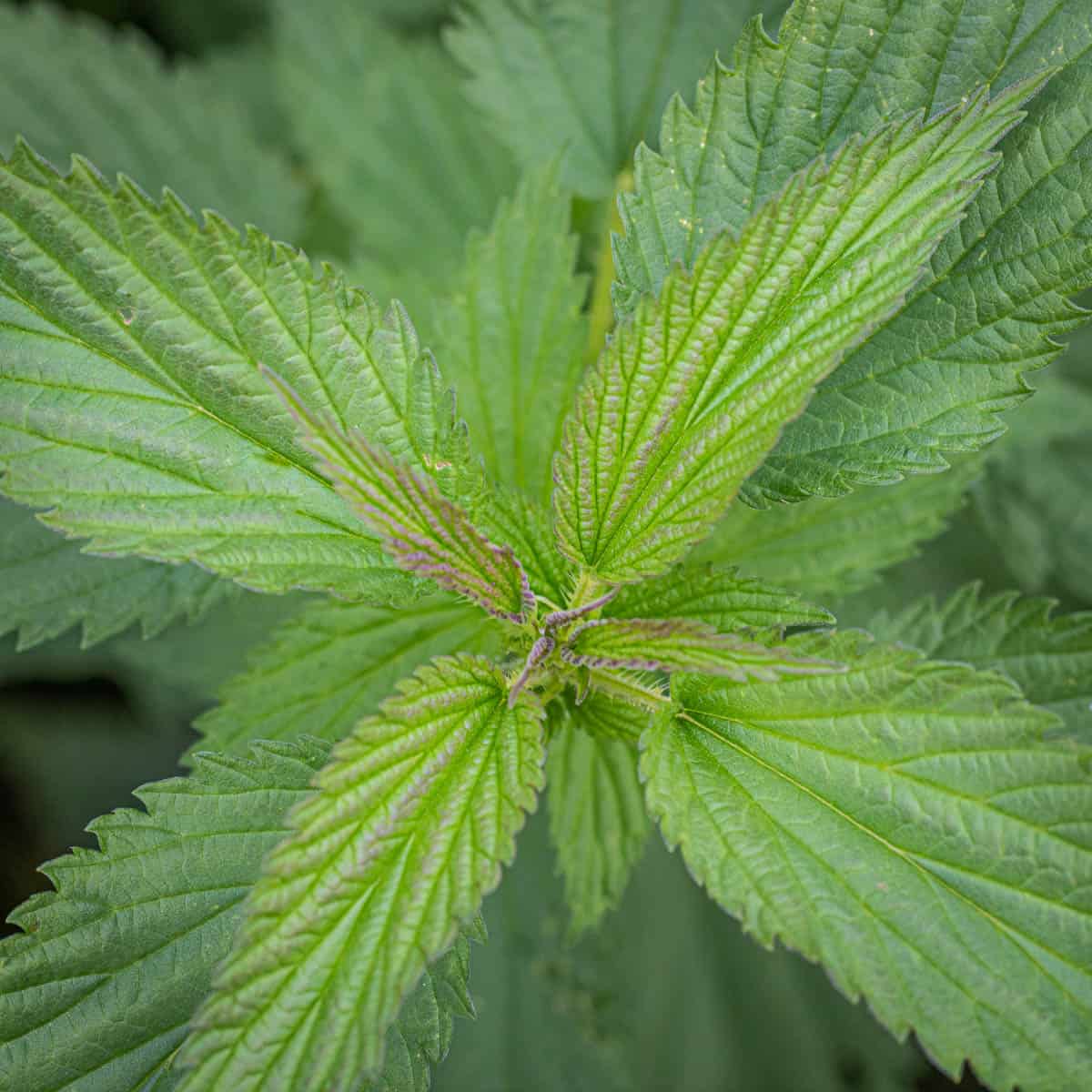
The best part though, is that they're free. There's lots of different types around the world, but here I'm only going to mostly cover common nettles (Urtica gracilis, dioica, urens, and others), as they're the most common species most people will have available near them.
There's a lot of different varieties around the world, and to my knowledge, all of them are used as food. Incredible plant that they are, nettles can also be used to make wonderful fiber, culinary/cosmetic oil, and even a sort of homemade hair treatment. Believe it.
Species
North America vs European
As I understand it, for a long time Urtica dioica was the name used to describe all of the common nettles in North America, and some older guidebooks probably still list it as such.
Just like with wild mushrooms, genetic sequencing and taxonomy seems to be constantly changing, and it now seems that Urtica dioica is strictly a European species, although I've been told it grows in some places in North America.
This means that common nettles that were once seen and referred to as a non-native, invasive plant in North America, are probably native. For eating purposes, this doesn't matter, as all common nettles make for good eating.
Wood nettles
Common stinging nettles aren't the only nettles out there to eat. Depending on where you live, there's also wood nettle (Laportea canadensis) whose leaves are more round than the pointed leaves of the common version. Both are great plants for the table, and some foragers even prefer wood nettles.
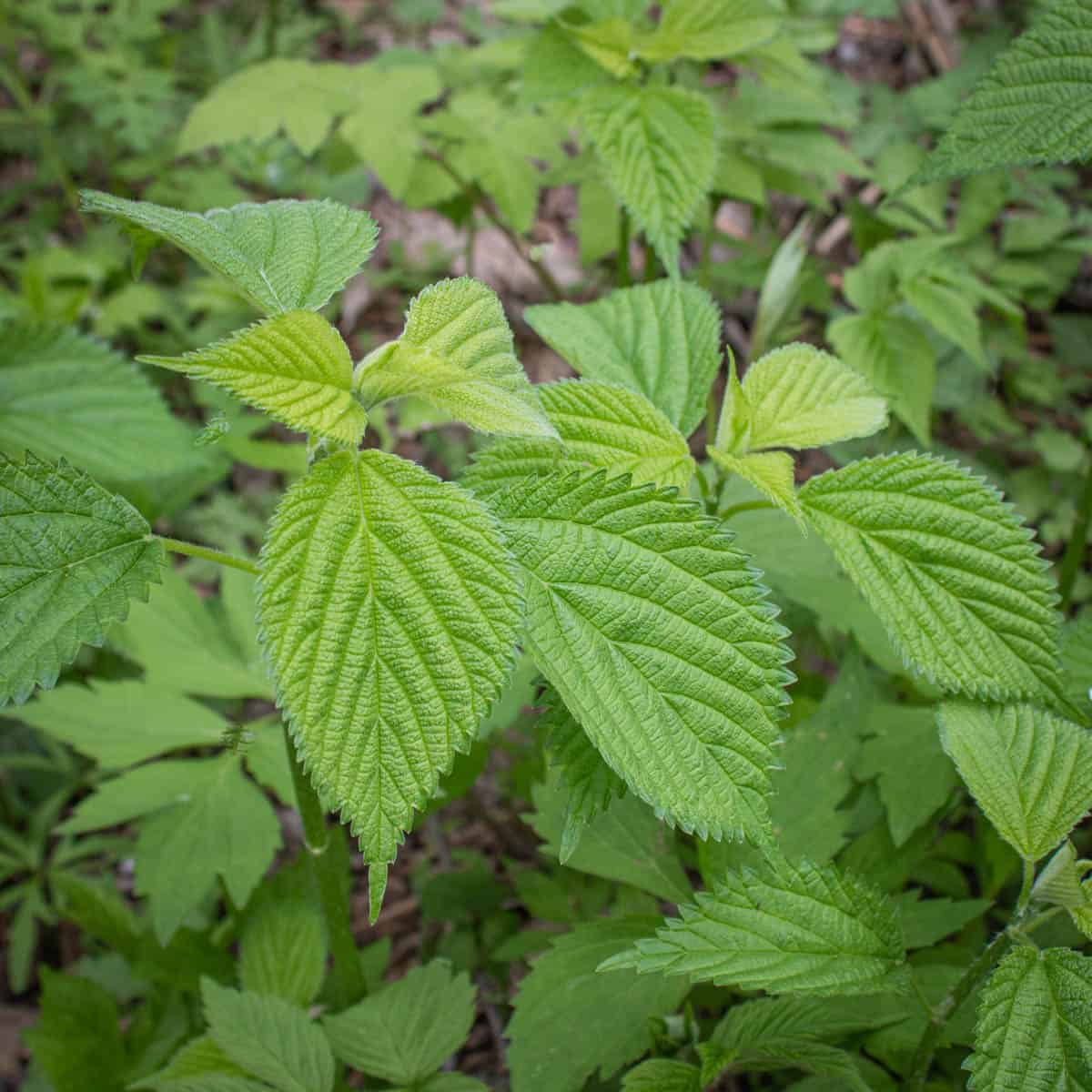
One good thing to know about Laportea canadensis is that their stingers are generally much more intense, and will likely sting you even when very young, unlike the more common variety which some people (myself included) harvest without gloves when very young.
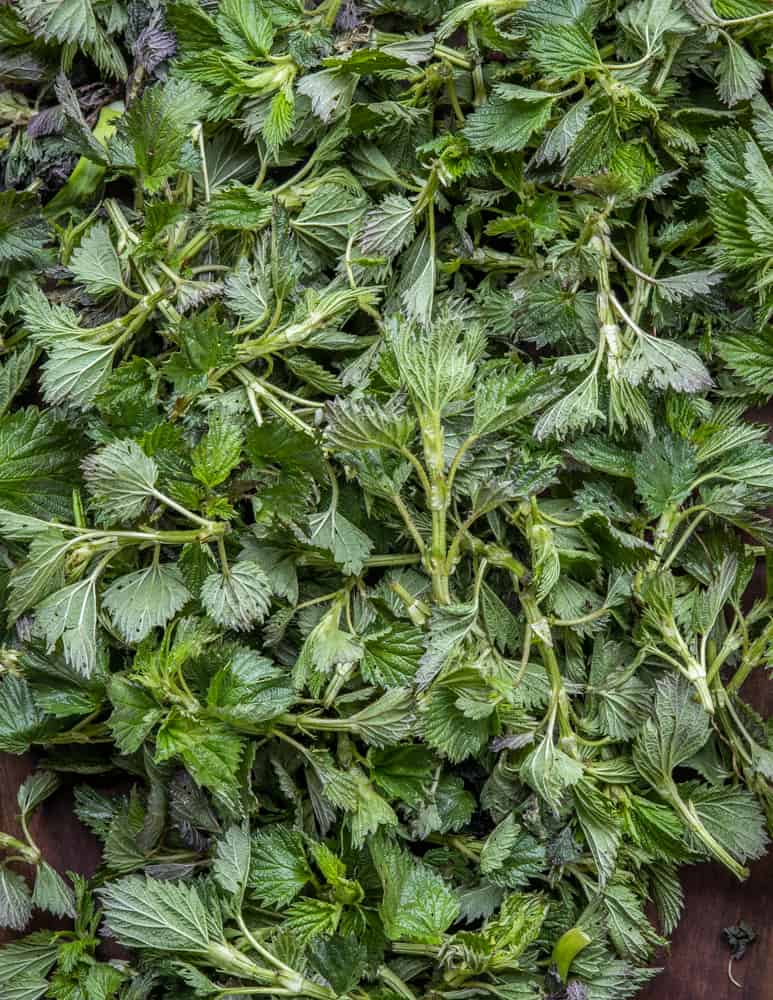
Use around the world
Along with watercress and mallows, stinging nettles have a long history of use, and humans have been eating them for thousands of years. You might be thinking "ok, sure, but if they're as popular as you say, why aren't there any farms that grow them?".
Nettles have never really been cultivated because, unlike, say, garden plants, they didn't need tending. These are sturdy, hardy plants, and they grow so well around the world that cultivating them was never necessary. No matter what happens, sans some act of god, year after year, they'll come back.
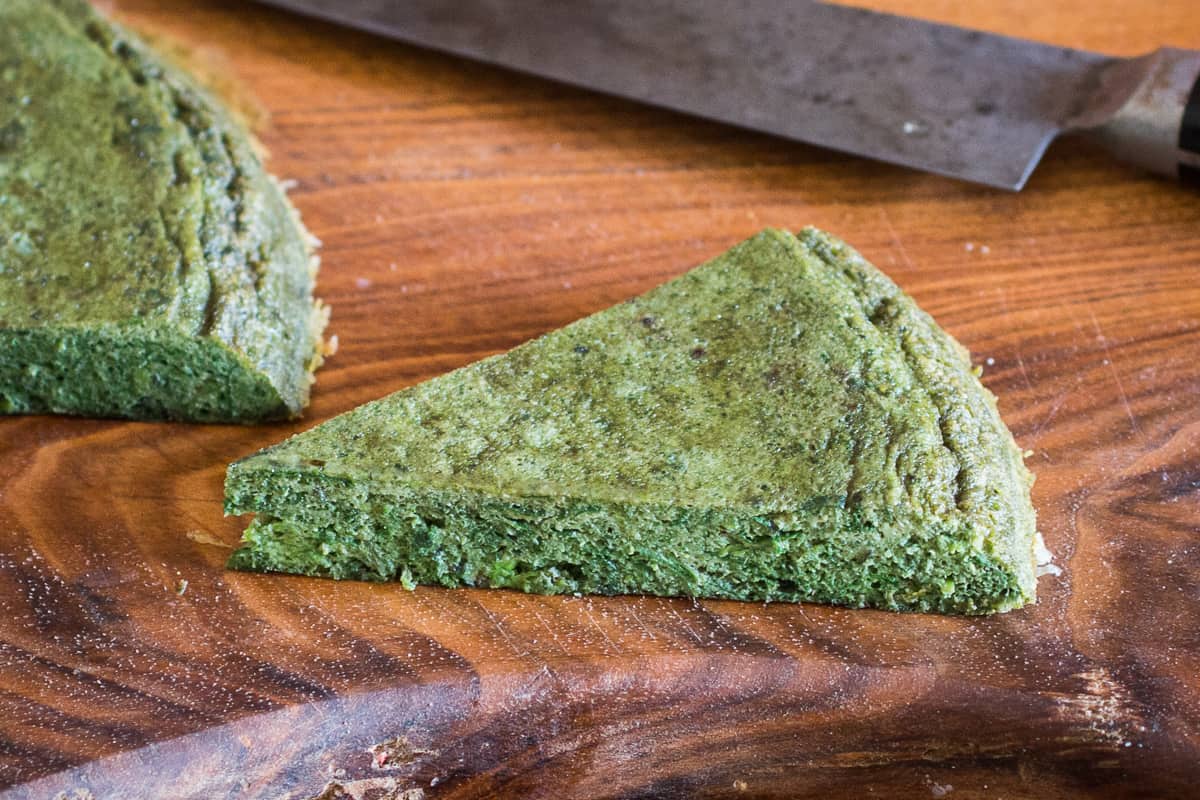
All across Europe, cooking stinging nettles is common right of Spring. When I cooked for the Swedish ambassador years ago during the spring, he requested they be on the menu, which should tell you something.
There aren't many American's that crave them, but that's slowly changing, and now nettles are probably one of the most commonly eaten wild plants in North America among foragers.
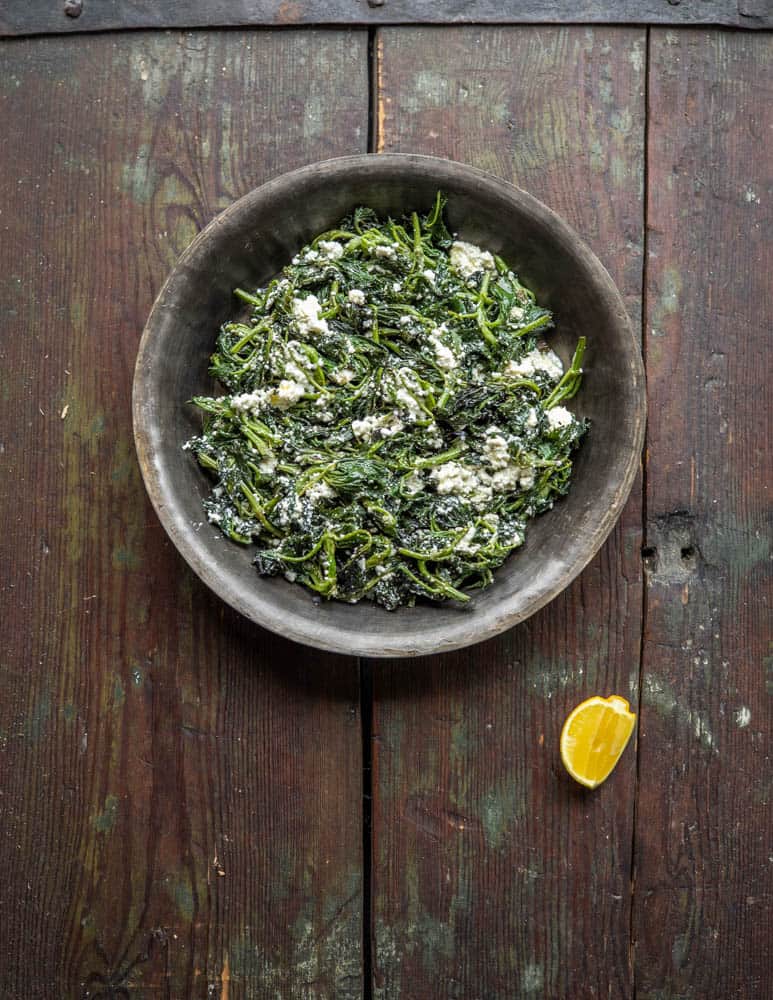
Here's a few examples of places around the world where nettles are enjoyed, along with their respective names. Notice how many of the regional names are similar-a nod to the Latin root word Urtica. If you have any more traditional names and locations to add to the list here, please leave a comment-I love adding to the list!
- Spain: Ortigas. Used in soup.
- Mexico: Ortigas. Used in soup.
- Scandinavia: Nassel / Norwegian (and others). Used in soup called Nasselsoppa.
- France: Ortie. Used in soup and as a cooked green.
- Turkey: Isirgan, steamed or cooked in soup.
- Nepal: Asso (and others). Used to make fiber or cooked as a green.
- India: Kuppi. Used as a cooked green and in dishes like Saag, etc.
- Italy: Ortiche. Used in soup or as a cooked green.
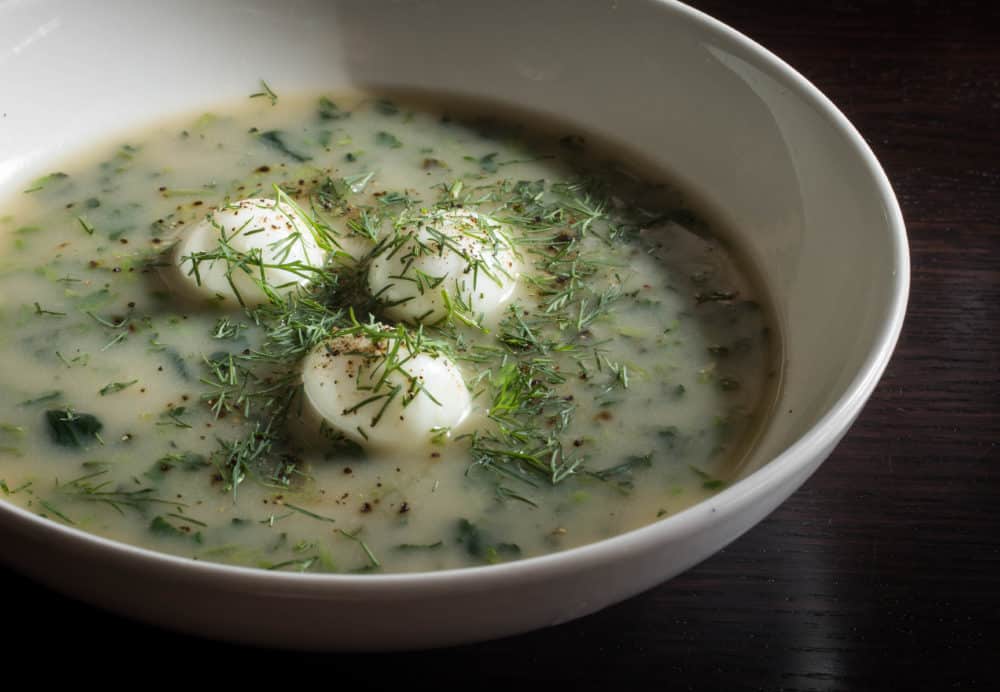
A free luxury ingredient
Nettles are loved by chefs, and, believe it or not, the greens will sell anywhere from $10-15 per pound wholesale-more than any type of heirloom green I ever purchased for my restaurants.
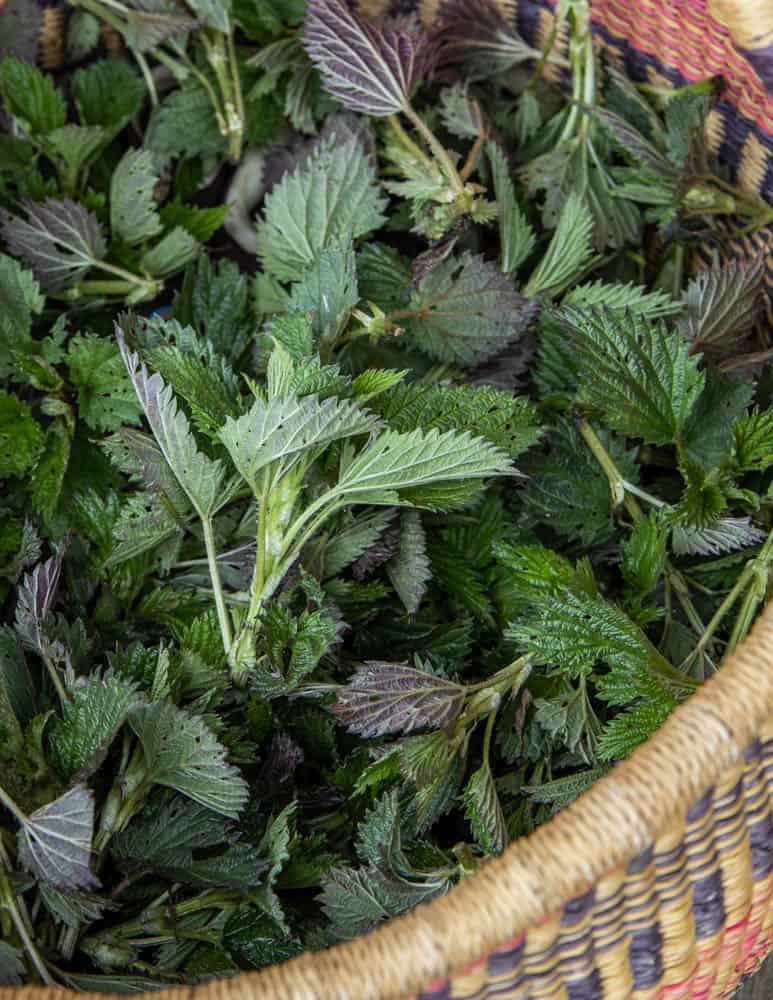
Nettles that have begun to make seeds are getting mature, you can still eat them, but I like to use a scissors to clip off only the tender new growth. After a few months of growing the stems get tough and fibrous. Of course you can always pick the leaves off, but the tender stem is half the fun.
Harvesting and storing
The best plants for eating will be young: I like them about 3-4 inches long. As the plants get older, the young tender tops can still be harvested, but avoid any that have started to develop seeds as they'll be tougher.
I make sure to keep some gloves with me and a scissors when I'm out hunting in case I run into a good patch. I gently grab the plants with my gloved hand, then snip small clusters of them using the scissors, and put them in a paper bag. Once I get home I immerse the nettles right away in cold water to refresh them in case they're been in the car and have wilted. If the nettles are very young, I may not even use gloves. With wood nettles, I always use gloves.
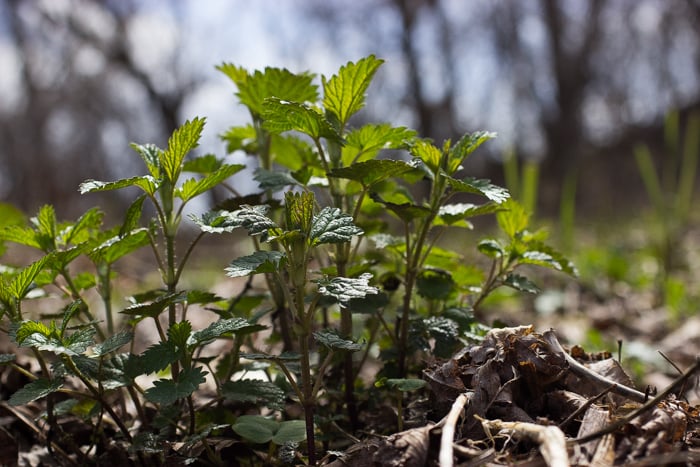
After they're washed I shake them dry (still wearing the gloves) then put spin them dry in a salad spinner or wrap them in towels to weep water. Once they're dry, I put them in a bag that could be plastic or a paper grocery bag, along with a damp cloth or a few paper towels to keep moisture in with them since the refrigerator will dry out greens quickly at home. In a restaurant setting I store greens in large tied bags, or in plastic fish tubs until they're needed.
Why are my greens purple?
When very young, the plants may look purple as you can see in the image below. This is a natural phenomenon that happens when it's still cold outside, and is common with some plants that grow during the very early spring. Wild mints I harvest will be often be purple in early spring too.
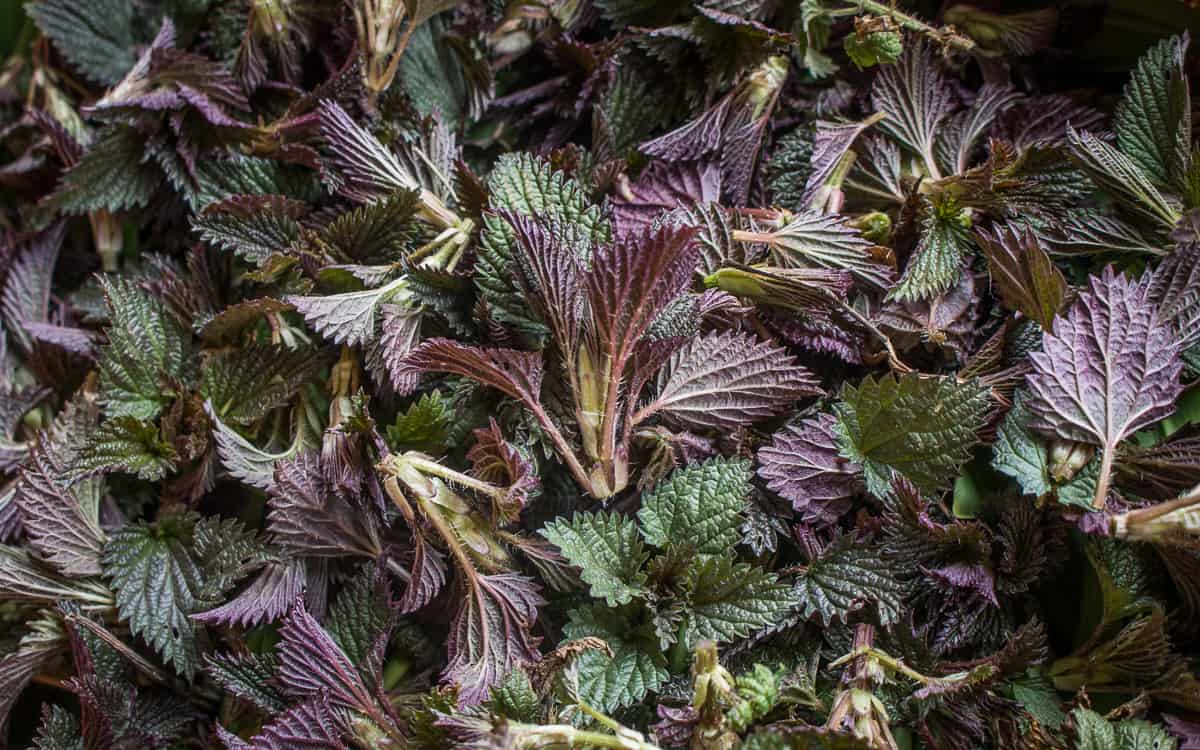
Young vs old plants
As I mentioned, the best nettle will be a young, tender one. The entire shoot can be eaten like a vegetable and there is no need to pull off the leaves, just blanch, steam or wilt them, then chop, or use whole as you would another leafy green.
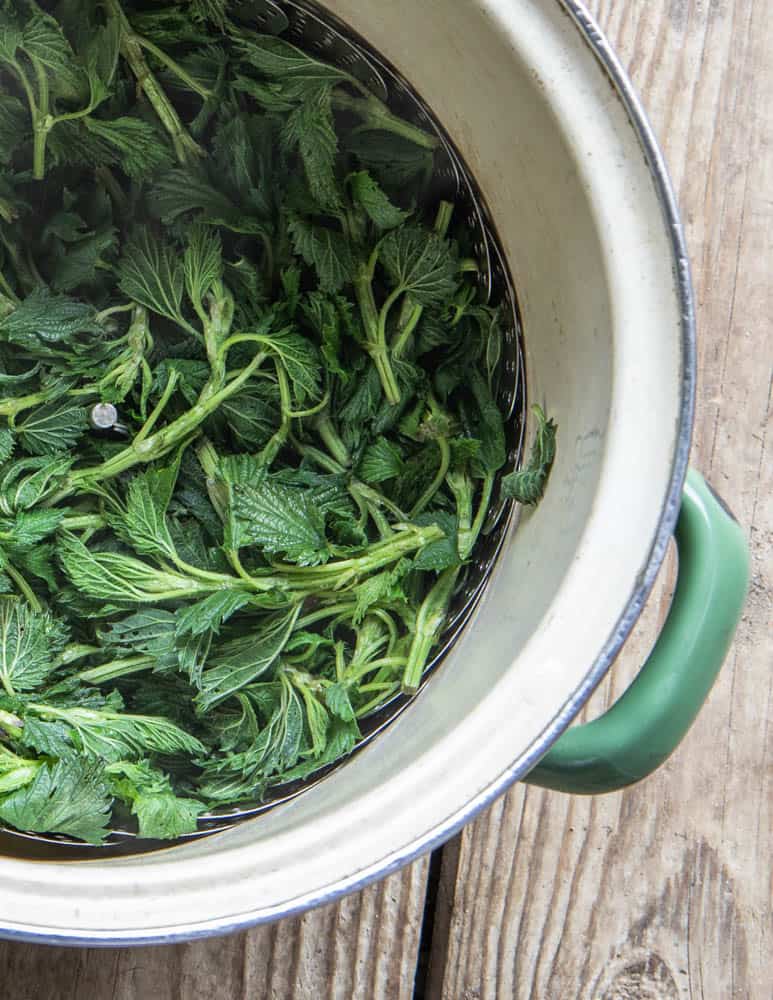
If your nettles are older, you can cook with only the leaves but they can be stringy, especially if they've gone to seed. Occasionally I'll make a puree or a soup out of older nettles if I can't resist picking or if someone brings them to me and I can buy them on the cheap. Waste not, want not.
Seeds
Nettle seeds are some of the easiest wild seeds to harvest I know of, along with cow parsnip, wild fennel and angelica. As the plants get older each year, they'll start to bolt and produce seeds, which makes the plant tough and stringy to eat. While they don't taste like much, they can make a fun sprinkle.
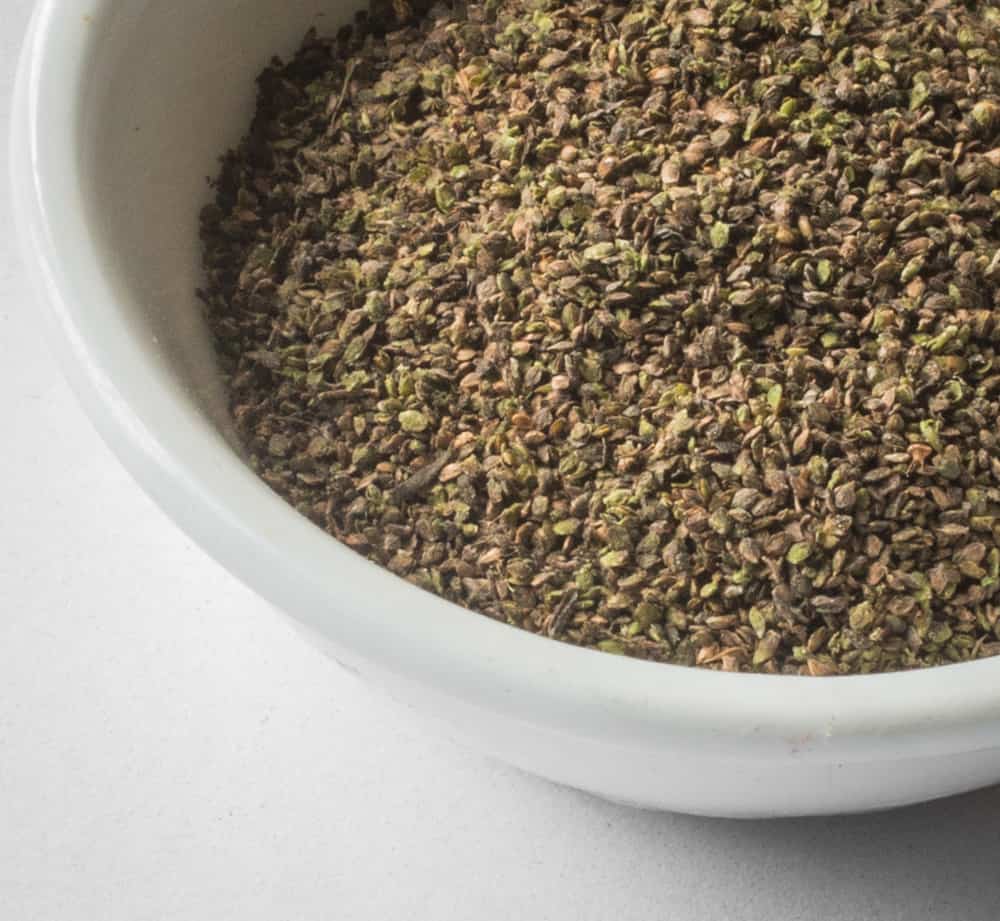
If you're picking regularly from a patch near you or preferably in your yard, you can mow them to force them to keep making young, tender growth. Eventually, though, the plants will go to seed, just at a shorter height.
The seeds can be ground into a primitive flour, but I typically just gently toast and sprinkle them on dishes like granola or yogurt, or add them to baked goods. Just like their cousin hemp, nettle seeds are also pressed commercially for their oil that can be used for medicinal or culinary purposes, and has a mild, pleasant flavor.
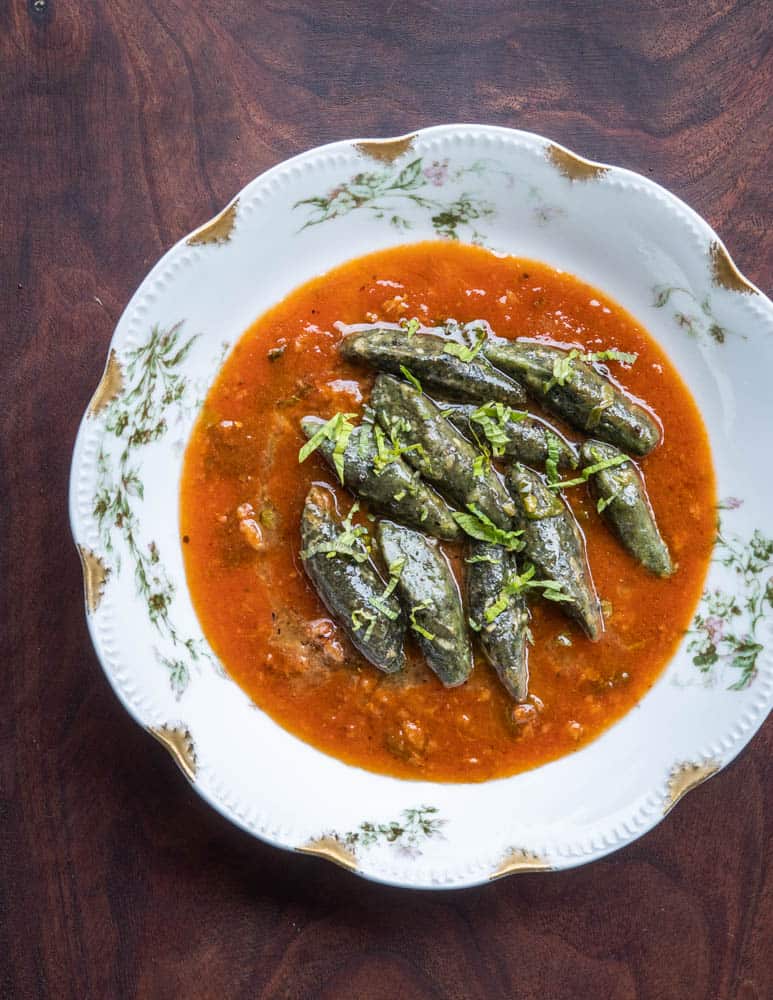
Cooking
In the kitchen you can treat nettles like any other leafy green. The key to getting nettles that are the best for eating is getting them at the right age.
I like plants that are young and less than a foot high, but you can also harvest the tender tops throughout the year until the plants go to seed, and I've seen traditional summer recipes from Scotland that specifically call for the young tops of the plant.
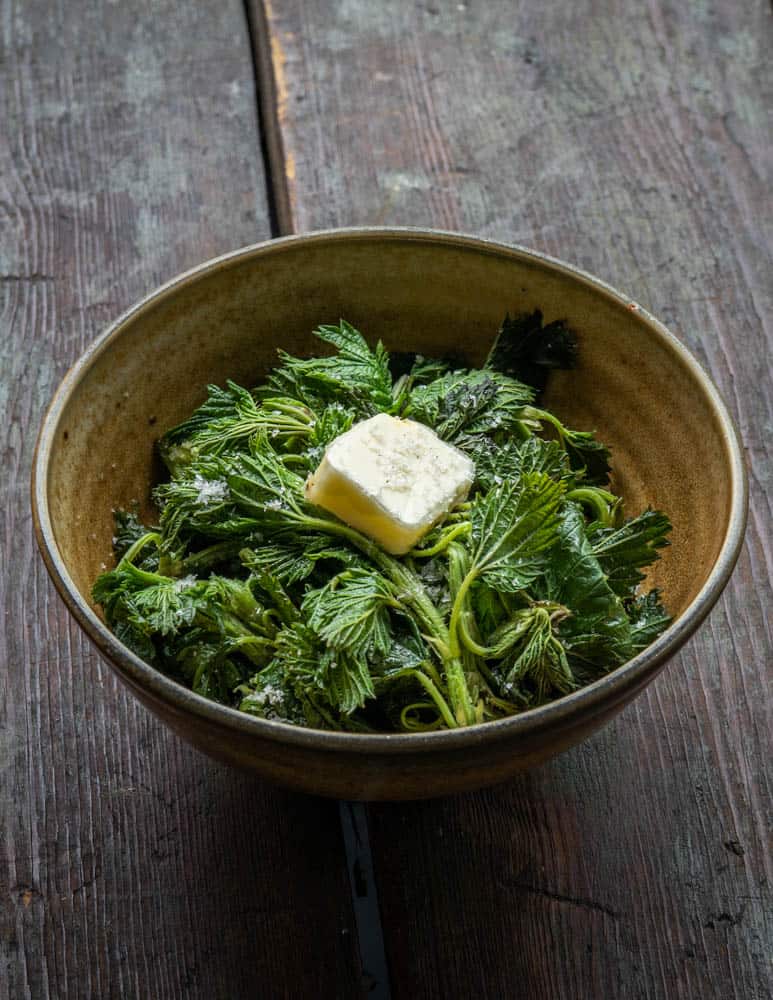
Flavor
Of the two species I've had, wood nettles (Laportea canadensis) are much more vegetal/green tasting with a floral aroma that reminds me of apple blossoms (steam them for the strongest flavor). Common stinging nettles have a sort of saline/ocean quality to them, especially if they're pureed. The difference is real, and fascinating. Blanching either plants will yield a more mild taste, steaming them will give you more of their true flavor (as well as extra nutritious solutes).
How to remove the sting
Contrary to what most will think, the "stingers" on the plant aren't thorns, they're actually something called a trichome, and it's more similar to a brittle, crystalline structure, which makes it easy to work around. To remove the sting from nettles, you have a number of different options, four to be exact. The sting/burn can be removed by:
- Crushing, as is the case when people slap them in their palm and eat them raw. In some countries (Turkey) nettles are crushed with a rolling pin and used to make a raw salad called Isirgan Salatasi, believe it or not!
- Blanching in salted water until wilted, 30-60 seconds is plenty of time.
- Steaming, one of the best ways to preserve their true flavor as some water-soluble compounds are lost in blanching.
- Dehydrating, typically after drying nettles are used for tea.
Preservation
Dried leaves
Stinging nettle has been dried and used as tea for a long time, and can also be ground to powder in a spice grinder after drying to be used as a coloring/seasoning, although I prefer blanched or steamed, pureed nettles for coloring things like pasta. Dried crumbled leaves can make a nice addition to soups.
To dry the plants, I tie up the stems and hang them in a sunny place, or just lay them on trays with a gentle fan blowing on them. Once the leaves are crisp and bone dry, I crumble them and store in a jar. You don't need to blanch the greens before dehydrating.
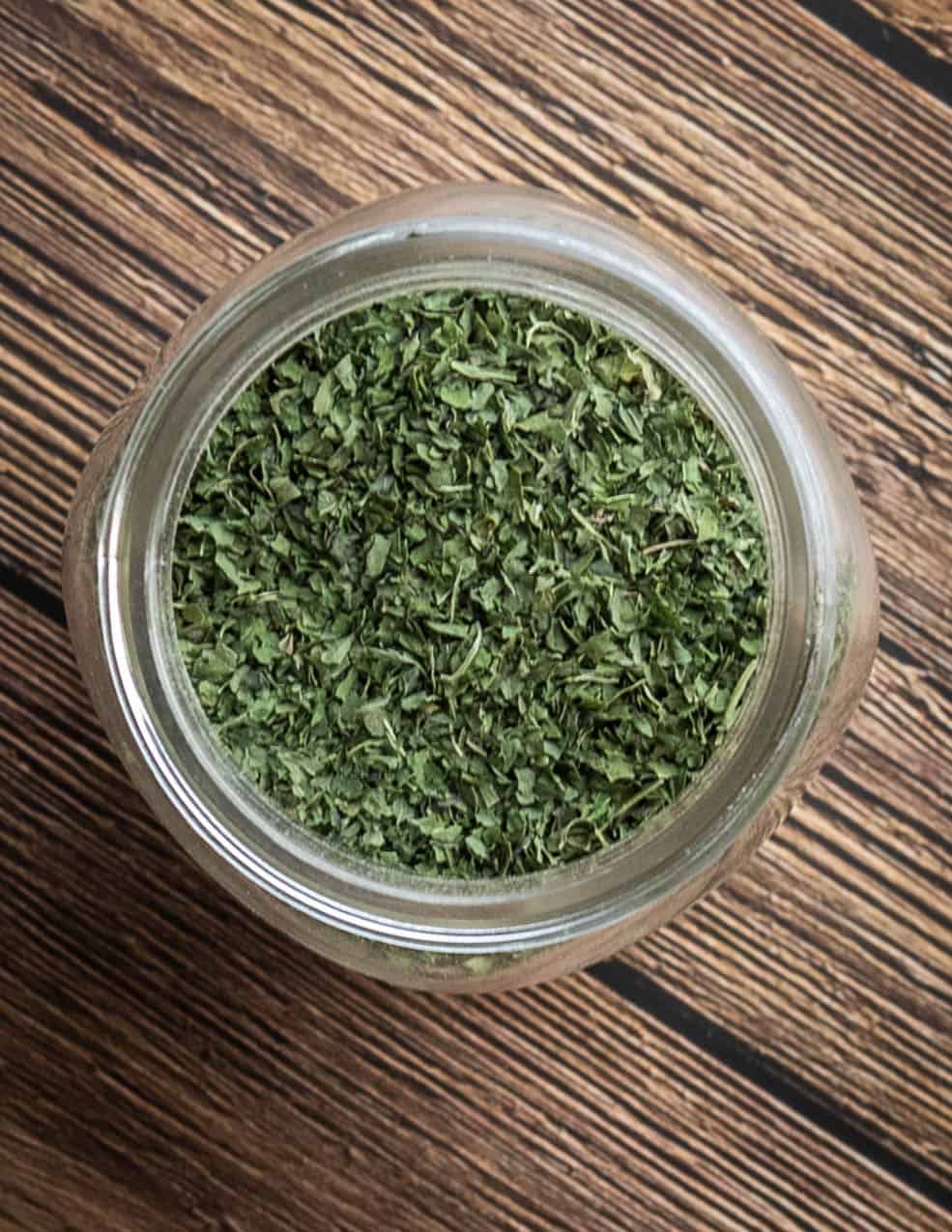
Blanching and freezing
Freezing is also an option I use often. To freeze I blanch nettles in boiling, salted water, then drain, without soaking in ice water, squeeze out excess water, pack into labeled, dated ziploc bags and store until I need them. After freezing, they won't have exactly the same texture as fresh, but they work well for soups, pasta fillings and purees. You can also steam nettles before freezing to retain more of their flavor.
Recipes
Classic Nettle Soup
The most well-known dish made from the plants is soup. I like mine pureed, with some extra greens finely chopped and added for texture.
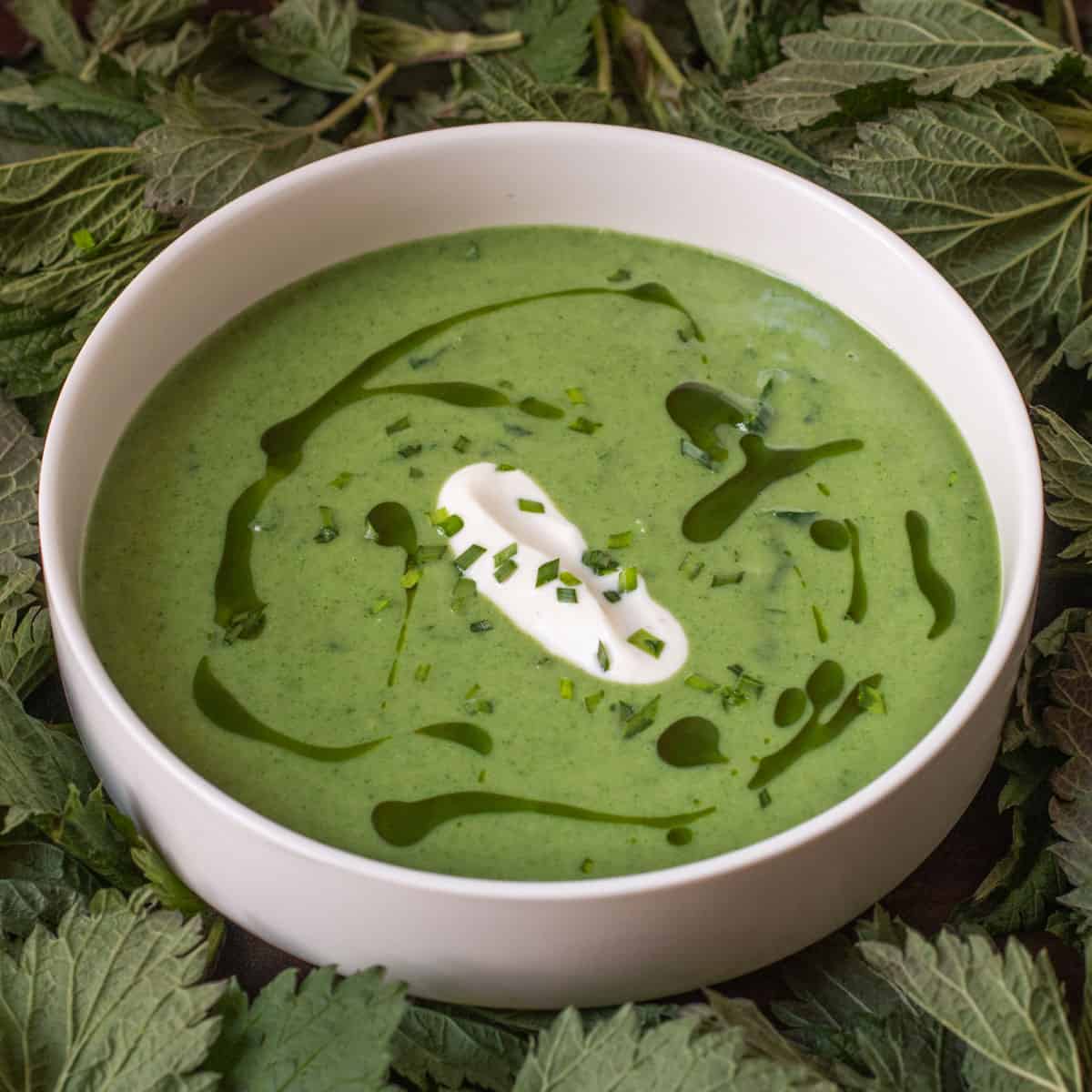
Steamed
As I mentioned, steaming will retain more of the natural flavor of the greens. If you've always blanched yours, you need to try it.
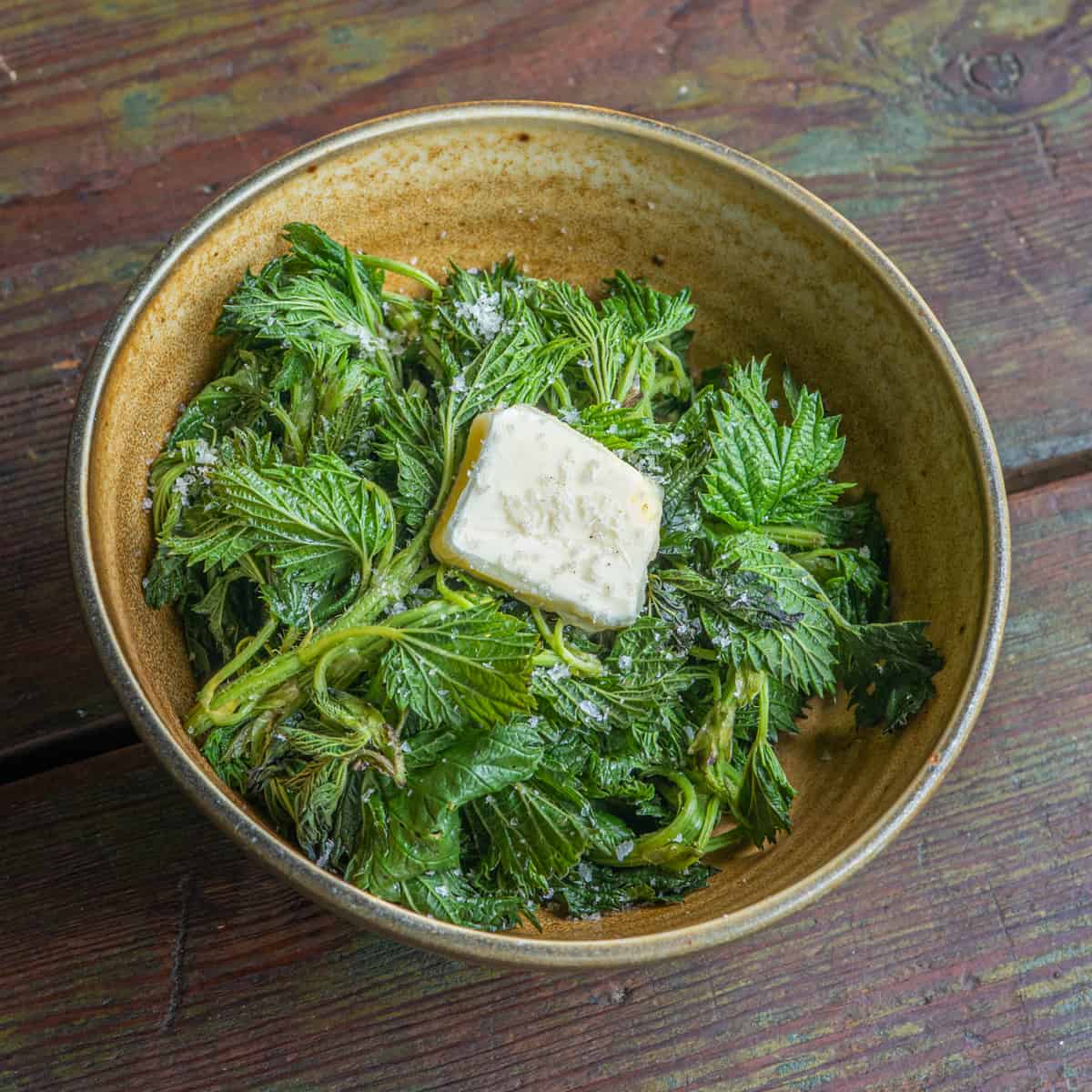
Nettle Breadcrumb Gnocchi
Rustic pasta dumplings made with breadcrumbs and cheese.
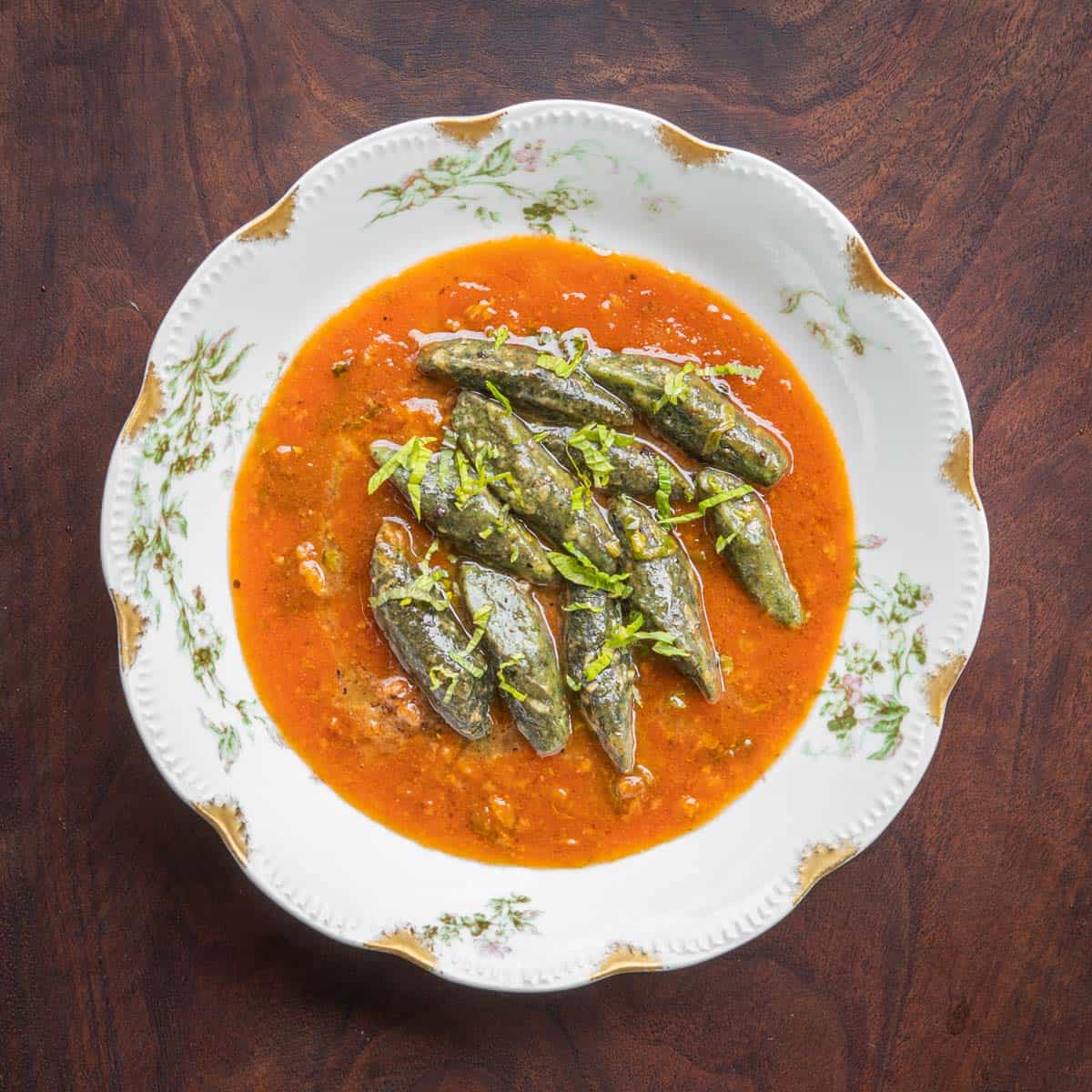
Nettle Crepes
You can puree the greens and use them to color different things. Crepes stuffed with a little goat cheese and served with extra greens is one of my favorites.
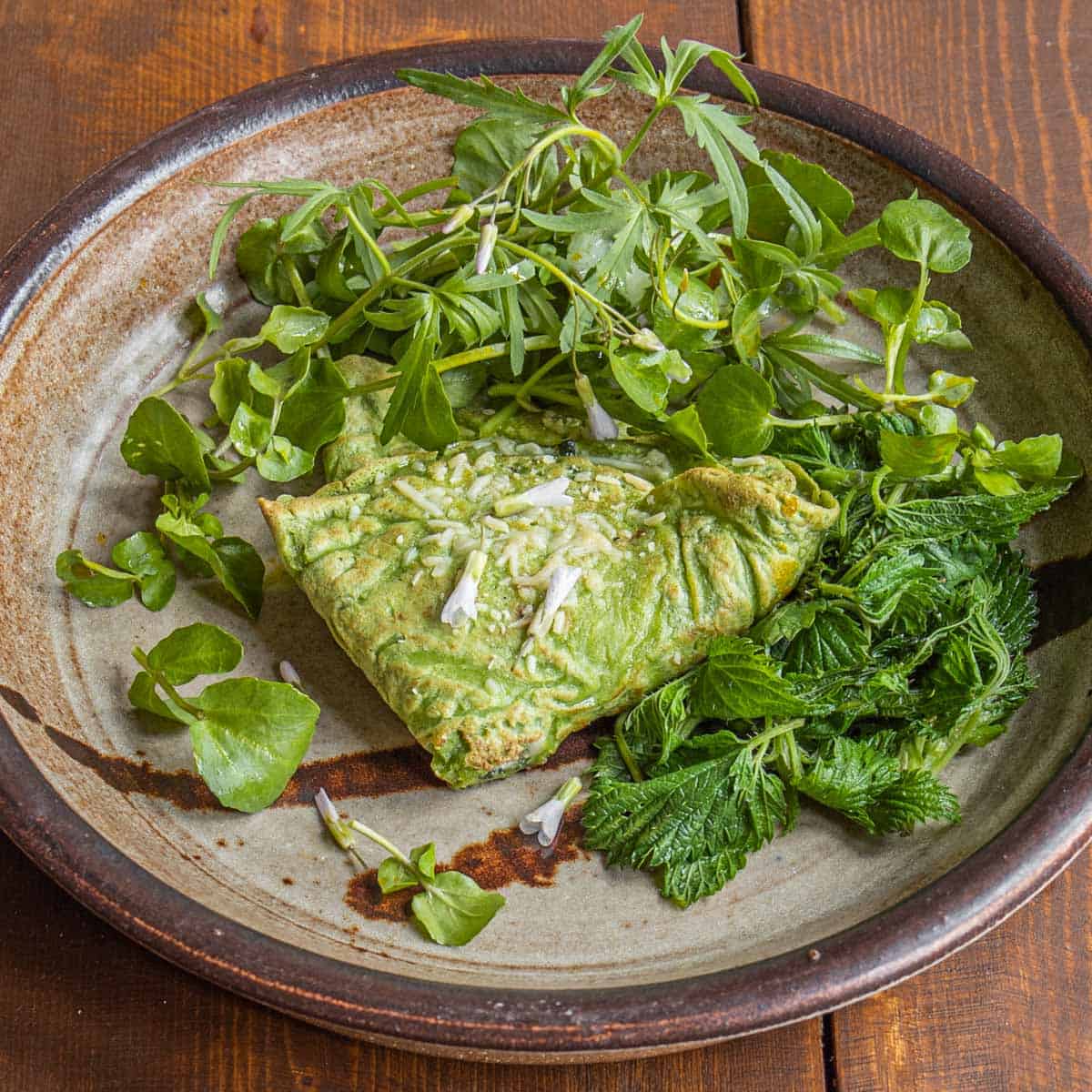
The deepest green frittata I've ever eaten. It's packed with as many nettles as possible. A great breakfast or brunch dish inspired by the great Richard Olney.
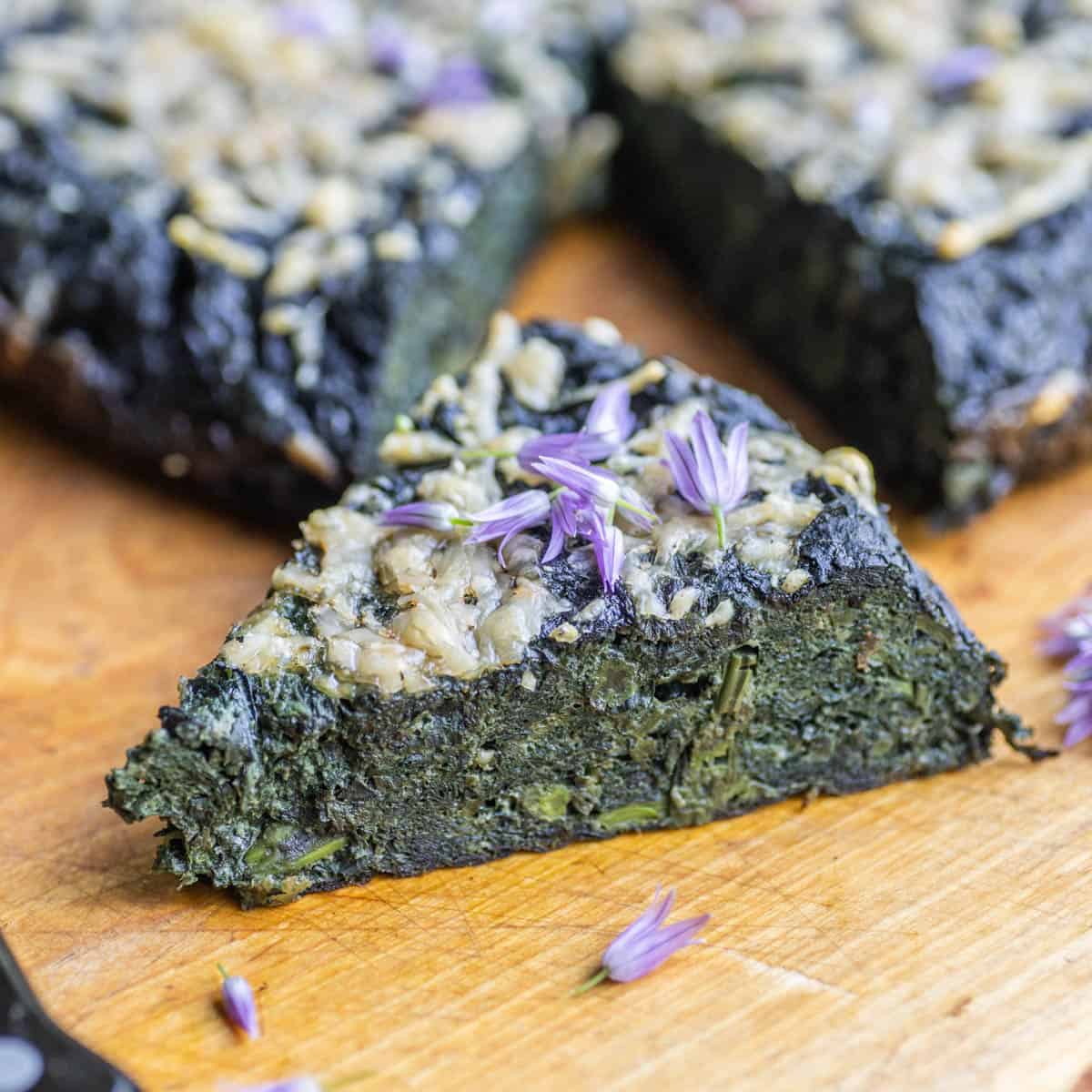
Nettle Pesto
Pesto is a great thing to make with wild greens. Here I accent the deep green color of the plants with pumpkinseed oil and pumpkin seeds. You can use the pesto to toss with pasta, but it's mild enough to enjoy as a dip, too.
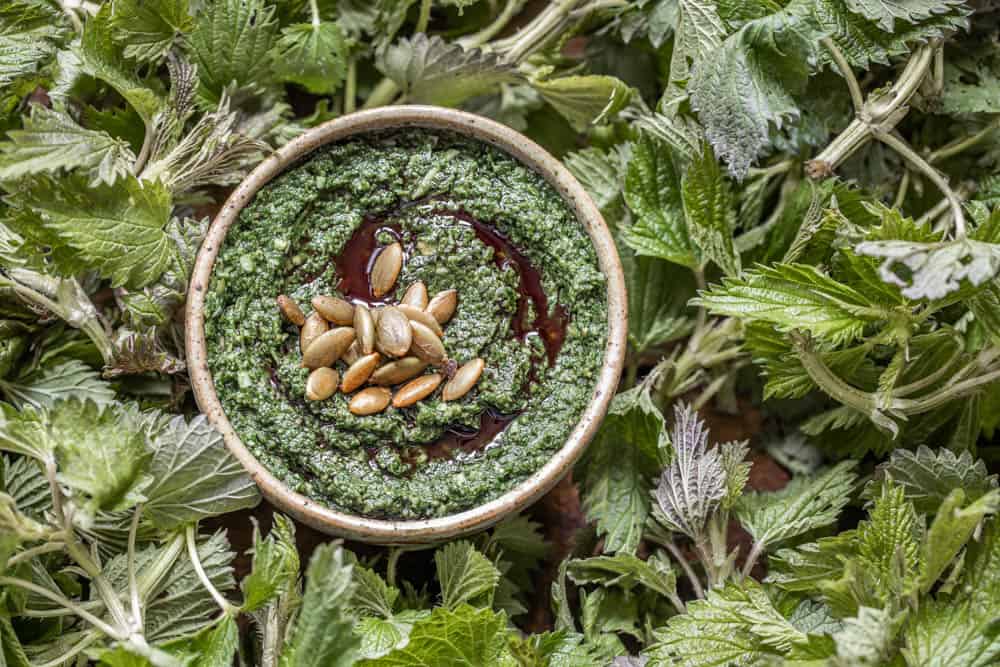
Hotch Potch
A thick stew of lamb and many vegetables, this is a very old Scottish recipe calling for the young nettle tops harvested in the late spring or summer.
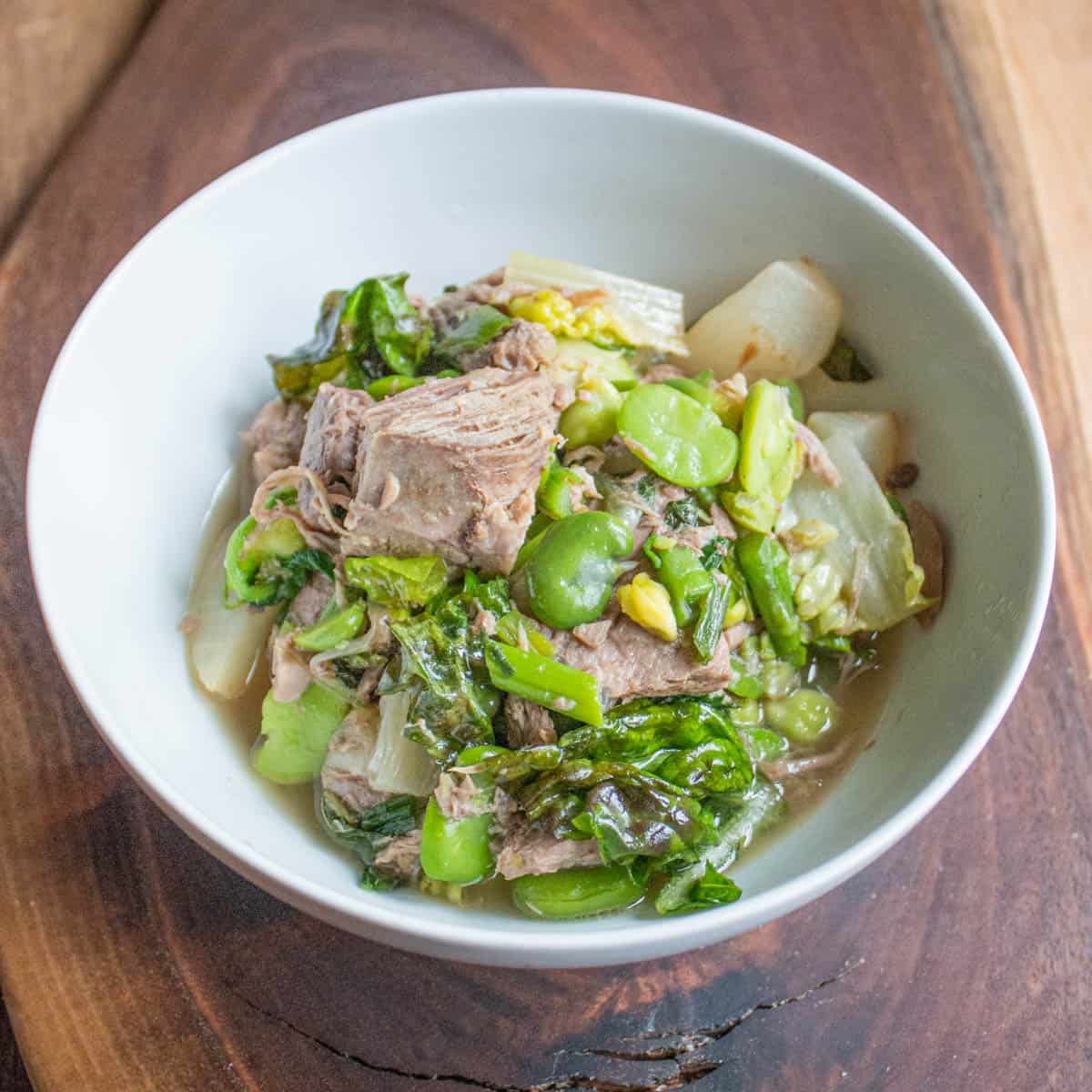

Jon
a stinging nettle beat me up. I suspect it wasn't happy
Alan Bergo
Se la vie
Jorjette
I have collected nettle seeds, have you ever tried to spout them? I wanna try this, I just wanna know if it is possible.
Alan Bergo
That's a great idea. It should work.
Jorjette
Thank you!
Nyeleti
I think I have a stinging nettle plant in my garden ( South Africa). I'm happy to know that it's not just a weed because I used to remove it from the garden. Mine's flowers are orange in color, the fruits are green while still young and change to purple when ripen. Hope it is the stinging nettle.
Alan Bergo
This doesn't sound like any nettle I've seen.
Heather
I want an entire cookbook of this plant!!! 💚 The nettles on my place are Urtica Urens (dwarf nettle). I am considering growing the larger variety in a raised bed. I am not sure wood nettle grows in Texas. These recipes look fabulous! Look forward to following you from here on out!
Alan Bergo
Hey thanks Heather. I totally agree. I originally had an entire chapter dedicated to them in my book. Such a good plant.
Steph
If you are using dried stinging nettle for stews, how much would you suggest using?
Alan Bergo
Try adding a tablespoon to a couple cups of broth and going up from there. You will need a little more than other herbs, think of it like a vegetable.
Katie
Can you dehydrate for optimal nutrition raw, or do you have to blanch first and then dehydrate? I’ve had great results blanching for pasta dough and pesto, but wondering about dry storage instead of freezing.
Alan Bergo
Lay them on a tray with a gentle fan blowing on them, or tie them up and hang. They'll dry naturally and there's no need to blanch them.
Deb
What about crushing/ bruising? Is this not necessary before drying? I really want to try them, but I'm a bit scared... lol. All this time I've been cursing them. It may be time to embrace.
Alan Bergo
Drying, crushing, cooking and freezing all have the effect of rendering the stingers unnoticeable. You can just dry them like any other herb, no prep needed.
Tad Davis
Nettles are common in the market here in Tbilisi now. I always clean and blanch them for future use. But... how much cooked and "squeezed" nettles are equal to one cup of raw nettles?? I bought about half a kilo and got about one pint of cooked nettles from it. That was a boatload of nettles (big full plastic bag)... I want to make pesto, hummus, pkhale, etc. now, but I'm at a loss as to how much cooked nettles to use. The recipes always give raw measurements (and sometimes very vague ones at that.
Alan Bergo
A Georgian! Ok, so this is actually pretty simple as I had to do tons conversions for my book with leafy greens. Generally speaking, cooked/blanched greens, squeezed of their juice, will be about the same as liquid volume, meaning 8 oz (450 g) of nettles, after cooking, will be about 1 cup (450 g). This will vary a little depending on the amount of stem in your nettles, as they don't cook down as much as the delicate leaves. Hope that helps.
Amy
I recently harvested a lot of nettles, and really enjoyed your steamed version. I’m wanting to dehydrate a bunch to use on soups and tea. Can I use the stalk too? I assume so because I eat it, and I’ll be grinding it. I ask because other sources highlight dehydrating details but say to only use the leaves. Seems like a waste to me.
Alan Bergo
Amy, if you're nettles are very young it's fine to use the stems. If they're older, you would probably want to powder or grind them up, for infusions like tea and soup, it is totally fine to do that.
Vivian Hanson
I lived in Sweden for. a year and discovered a lovely bakery.
In their window was a loaf of verdant green bread
Of course I went in to find. out it's heritage.
Nettle Bread
I purchased it took it home to our log house on the lake, slathered Homemade butter on a thick slice...went outside to sit on the làke and have my curiosity satisfied.
It was amazingly delicious
I managed to get a recipe and make my own nettle bread
It was beyond scrumptious!!
I was able to get a recipe and then baked my own. Nettle bread
I
ead
Kevin Bush
Hey Alan,
How come you suggest cleaning quickly after harvesting?
Alan Bergo
Kevin, decapitating the tops of any plant causes stress. In addition to ridding them of dirt I don't like in my food, washing the greens in cold water imbibes them and brings them back to life.
Gilbert
I discovered a 20x20 foot patch of nettles growing among sumac where I dumped used straw bedding. Must have been some seeds mixed in.
I harvest the new tops with 6-8 leaves. Could get three cuttings a season but there's no need. The leaves later get infested with some bug that is apparently a beneficial pollinator. Older plants are super compost.
I put the nettle tops directly in a chest freezer in trays or mesh bags. Freezing ruptures the cells, they dry in the freezer, over time shrinking. When I want nettle flakes for eating on toast or cooking I transfer to a dehydrator 120 degrees I think. Then can be run through a hand grinder coarse for delicious crunchy ingredient.
My gateway nettles recipe: nettles, sweet potatoes, coconut milk, ginger, lime juice. However they can be used the same as spinach, kale, sorrel, etc.
Mike Moranz
Alan,
Just ran across your site. You have taken a passion of mine and just blistered it! I've been a forager since a teen, dirt biking and grazing on mulberries, cattails, wild asparagus, and harvesting maitake mushrooms with a local polish family. I notice you don't list mulberries in your wild fruit list. They are abundant along park edges and as ornamental trees all over St Paul. Mid summer the sidewalks are covered in purple and the birds are just giddy.
Where I grew up, a local farm grew asparagus during WWII and canned it before eventually shutting down and the area going wild. As a result, the ditches and farm edges and railroad paths have bunches of asparagus all over the area. A rite of spring was to get out and one could easily pick a bushel if you knew the spots.
Really enjoy the vibe of your videos. You have captured exactly the feeling of getting out in the wild and really taking the time to look closely around you for the wonders that abound. My wife and i see it as a meditation of sorts with a treasure hunt, and a tasty meal at the end.
So, nettles? Always heard of eating them but never knew exactly how to go about it. Your video has enlightened me to give them a try this spring. My question for you today is about timing. Do you keep a list of typical season or time when you know you have to hit the woods for certain things? For example ramps first week or two of May, chanterelles 2nd half of July, etc.
Please don't let this site get too popular, I'm selfish.
Alan Bergo
Hey Mike! You're right, mulberries aren't on my list here, because....I actually don't have a great spot for them! If you do, we should meet up this year and gather some. I only write about ingredients I've harvested myself here (unlike some other writers in the space particularly online). This makes the process of sharing things with readers a lot slower, but also ensures the content is rock solid. Nettles are up first thing in the spring, even before ramps. If you plant some in your yard (they'd love to be around a garden) you can mow them to get continual harvests through the year. Wood nettle is legion around the metro area, if you need a spot I'll send you one.
As for the popularity of the site, I can't promise anything:) I got so much traffic last year I had to invest in an entire server to keep it running, which, while overkill, ensures it runs smoothly even during our busy mushroom season in MN. Be well. Alan
Andrew Skorzewski
In England they have nettle eating contests. There are videos online, Its hilarious.
Alan Bergo
I've seen some, they're pretty good.
Sun
Hi, does nettle become kind of sticky after cooking? I wonder if that’s why people often make soups with them. I blanched them to put in spanikopita but they turned into one large lump in the fridge. Thx
Alan Bergo
If they're sticky I would assume they were overcooked.
MANiTA HOLTROP
I picked a whole lot, some netted have slightly purple stems, I blanched them for 90 seconds - didn’t put in cold water - and some have stayed nice and green and some become almost black - are those maybe not nettle? A friend told me her nettles stayed green even after boiling them in soup. I’m worried I picked something else - they sure looked exactly the same except for the stem slightly purpley!
Alan Bergo
The purple are nettles, they're just darker since it's still cold outside which increases the amount of anthocyanin type pigment they contain. Many plants have red hues until the temperature warms up. The purple ones are some of the best/youngest.
A
I think the black color results from a chemical reaction when heated with oxygen, (eg in an open pot).
Quickly steaming, in a covered pot will, I believe, avoid this.
The black color doesn't look good, but it is the same species.
Sandy trindall
Can you freeze the actual nettle purée?
Alan Bergo
Of course. You can freeze purees in ice cube trays for easy portioning too--just pop them out and vacuum seal, etc.
HB
Are the cooked nettle leaves still supposed to have visible spines on them after cooking? I boiled mine in water after washing in hot water.
Alan Bergo
You may be able to see them, but they definitely won't hurt you after cooking. I have a friend who eats them raw in the field after bruising in his hand.